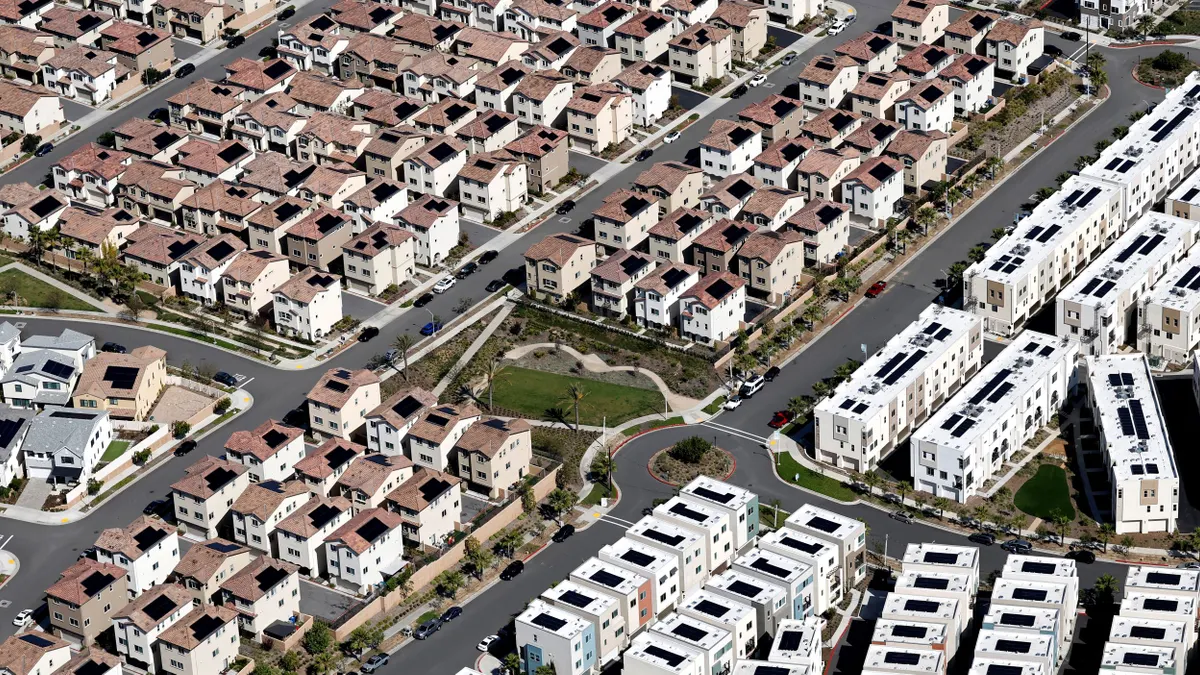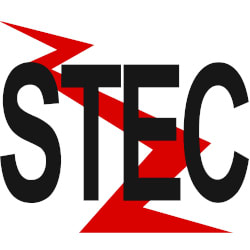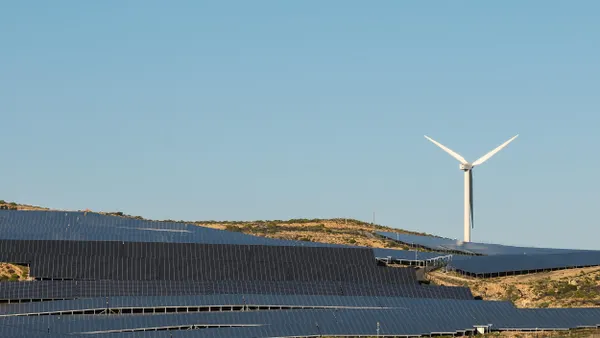Despite turmoil on key incentives and financial support that could threaten the distributed solar market, falling prices and battery storage are giving advocates something to cling to.
Congress this week rejected an opportunity to extend the investment tax credit (ITC) for solar, likely impeding industry growth. Net energy metering (NEM), a key compensation mechanism for distributed solar in 39 states, and other financial supports for solar are also facing new challenges.
In addition, the market and changing incentives for distributed solar are working in opposite directions. Driven by new efficiencies in hardware and labor, installed prices continue to fall in most markets, Lawrence Berkeley National Laboratory (LBNL) reported in October. But rebates and incentives have "largely phased out" in leading markets and fallen very low in most others, creating "a significant counterbalance."
"It is very hard to say how one factor impacts a market because there are so many moving parts," Vikram Aggarwal, CEO of national online solar marketplace EnergySage, told Utility Dive. As changes compromise predictability, "consumers need certainty, and even a financial support [mechanism] scheduled to phase down with certainty will attract consumers to the next question, which is the price of solar, the electricity rate and the payback period."
The uncertainty and potential market impact brought about from the withdrawal of the ITC and retail rate NEM can be seen in past changes to distributed solar's financial supports, researchers and stakeholders said. Whether solar can sustain its growth depends in part on how the solar industry faces the coming changes, and how utilities and policymakers choose to understand the value of solar+storage.
The markets now
Growth is slowing overall for distributed solar. U.S. residential solar grew 8% nationally in 2018, but only 7% year over year in the first half of 2019, according to the Q3 2019 Wood Mackenzie-Solar Energy Industries Association (SEIA) market report. In Q2 2019, non-residential distributed solar grew 2% less than in Q1 2019 and 16% less than in Q2 last year.
"Since 2000, installed prices have fallen by $0.50/W per year," but that "has been substantially offset by a corresponding drop in rebates or other incentives," LBNL's Tracking the Sun 2019 reported.
The payback period for distributed PV, which is "closely tied to solar policies and incentives" and "local electric rates," went up from 7.8 years in the second half of 2018 to eight years in the first half of 2019, EnergySage reported in September.
At the same time, "customer hesitation created by utility and regulatory uncertainty leapfrogged the high cost of installation to become the second most common challenge in closing sales in 2018," the February 2019 EnergySage installer survey reported.
There is, however, a "small but increasing share" of distributed solar being paired with battery storage, LBNL found. It ranged from "1% to 5%" of installations in major markets last year, but was over 60% of Hawaii installations. Drivers were declining storage costs, customers seeking reliability against outages and new utility policy incentives.
Financial supports like rebates, performance-based incentives, state and federal ITCs, and retail rate NEM "have been a driving force for the PV market," LBNL observed. With the ITC and NEM under threat, solar installers in leading state markets are turning to storage to sustain them, as installers in Hawaii already have, stakeholders and utility spokespeople told Utility Dive.
Key financial support
Without extension, the ITC's 30% federal tax benefit for solar investments will drop to 26% in 2020 and 22% in 2021. From 2022, only commercial distributed solar investments will get a 10% tax credit.
The solar industry has campaigned hard for a five-year extension and is aiming for a "Solar+ Decade" in which the resource goes from supplying 2.4% of U.S. power to 20%. That will require "policy drivers," including a federal ITC extension and retail rate NEM at the state level, SEIA said.
But the federal extension is as good as dead, especially with continued opposition from Senate Finance Committee Chair Chuck Grassley, R-Iowa.
Another financial support for distributed solar is utility-provided, performance-based rebates. A rebate pays either an up-front per-kW cost reduction for a solar system purchase or a short-term, per-kWh-produced compensation to utility customers who install solar.
"Rebate programs kick off the market, by attracting attention to solar and making local installers' marketing more aggressive," Duke Manager for Distributed Energy Technologies Stacy Phillips told Utility Dive. "But it all goes back to payback. The faster and lower the payback, the faster they adopt. And retail rate net metering provides more savings over time."
Retail rate NEM "is a compensation for the value customer-owned solar provides to the grid," North Carolina Clean Energy technology Center (NCCETC) Senior Manager of Policy Research Autumn Proudlove told Utility Dive. But it can be understood as "a variant of a performance-based incentive that encourages solar development."
Under retail rate NEM, solar owners are credited at the retail electricity rate for every kWh their systems send to the grid.
But policy debates caused by utility concerns that distribution costs will be shifted to non-solar owners are increasing, according to NCCETC's Q3 2019 update on solar policy. Historically, cost shift concerns have led to increased challenges to NEM and proposals to reduce it.
Of Q3's 150 regulatory and legislative policy actions tracked by NCCETC, 53 involved NEM or compensation rules. Four of the quarter's top five policy developments and two of NCCETC's "Big Picture Insights" found NEM or other compensation mechanisms for solar are in transition.
"It seems utilities are focusing on changes to net metering credit rates," Proudlove said, listing regulatory proposals for significant retail compensation reductions in Louisiana, Kentucky, Indiana and Michigan.
With the ITC and retail rate NEM threatened, previous significant withdrawals of financial supports offer an indication of what the distributed solar industry may soon face.
Impacts of uncertainty
Sudden introductions of rich incentives have produced an "in-rush of demand" that has "overheated the market" and driven the installed cost up, LBNL Research Scientist Galen Barbose, co-author of "Tracking the Sun," told Utility Dive. Successful programs ratchet incentive levels up and down predictably over time as the market grows, allowing market dynamics to drive price.
Uncertainty about incentive rate reductions can be eliminated by linking them to cumulative installations, a design used in the California Solar Initiative to build the nation's leading distributed solar market, he added.
To kickstart the market and subsequently transition smoothly to an incentive-free market, "program design is critical," NCCETC's Proudlove said. Abrupt termination of a financial support mechanism can cause a market-disrupting downturn. Political backlash often then forces lawmakers to restore the support, creating a boom-bust-boom cycle opposite of the market certainty businesses need.
Nevada's 2015-2016 solar industry turmoil was caused by unexpected regulatory approval for a five-year ramp-down of the NEM compensation rate from $0.111/kWh to $0.029/kWh, she said. Nevada lawmakers reversed the ruling, but the market has still not fully recovered.
Massachusetts, Maine, South Carolina and other states went through similar shorter-duration cycles of installation boom, bust and rebuilding when NEM caps led to forced or threatened withdrawals of compensation, she added.
Tennessee Valley Authority (TVA) data shows compensation decreases in its NEM-like Green Power Providers residential solar program consistently reduced participation, Southern Alliance for Clean Energy Solar Program Director Bryan Jacob recently said in a blog. And when TVA did not reduce the compensation rate in 2018, the number of customers did not drop, he told Utility Dive.
Hawaii's experience with NEM may be the best indicator of what happens when financial support is withdrawn.
The Hawaiian Electric Companies (HECO), Hawaii's dominant electric utility, leads the nation in rooftop solar with about 19% customer adoption, HECO spokesperson Peter Rosegg emailed Utility Dive. Growth has recently been slowed by new tariffs, but "on Oahu, the most populous island, one in three single family homes has rooftop solar."
Hawaii's retail rate NEM, which had existed for over 14 years, was terminated by its utility commission in October 2015, recalled Marco Mangelsdorf, President of Hawaii installer Provision Solar. NEM replacement tariffs failed to drive growth and there was a "tapering off of installations into 2017," he told Utility Dive.
"The real post-NEM doldrums happened in 2017 and 2018 when the 16,000 to 21,000 annual permits for distributed solar installations in 2012 to 2015 fell to approximately 5,000 PV permits per year," Mangelsdorf said. But 2019 data, driven by a second set of interim NEM successor tariffs designed to drive the transition to solar+storage systems, suggests "a definite acceleration of the solar coaster."
Before October 2015, Hawaii provided a consistent incentive background for solar and the key lesson of the "solar coaster" is that "unpredictability affects the market," Mangelsdorf said.
With storage now included in over 60% of new solar installations, Hawaii's solar industry seems to be regaining "normative growth," Richardson School of Law Assistant Professor Richard Wallsgrove, who engaged in Hawaii's regulatory proceedings on the tariff revisions, told Utility Dive. "But it is not possible to disaggregate the roles of NEM and the ITC in Hawaii's rapid energy transition."
Though both financial supports could be withdrawn across the country, HECO sees a continued need for solar support. To achieve Hawaii's 100% renewables by 2045 mandate, HECO will need to "at least double the amount of private rooftop solar on our systems," Rosegg said.
Other utilities disagreed with the need to support distributed solar.
Utility perspectives
Even utilities with significant solar growth question its value to their systems.
Financial supports appear to impose costs for solar on non-solar owning customers, Duke's Phillips said. It won't be clear that distributed solar adds reliability and affordability to the system and rate base until data analytics from advanced distribution planning tools show locational or other potential system value, she added.
Eversource Energy is among New England's leaders in programs that leverage customer-owned solar and solar+storage systems. But recovery of costs for some of the financial supports it provides to distributed solar in its three-state territory "has increased distribution and supply rates charged to all customers," Eversource spokesperson Reid Lamberty emailed Utility Dive.
The utility has "not identified operational benefits" for the distribution system and has seen distribution system "challenges," Lamberty said. Financial support programs that linked solar compensation "to retail rates and administratively set incentive levels" led to "counter-productive" start-stop cycles.
But adding storage so that solar becomes "dispatchable distributed generation" that can be "controlled and managed" could "contribute to distribution system operations," he added.
"There is no example of supports being withdrawn without an impact on the market, and Hawaii is the cautionary tale," EnergySage's Aggarwal said. "If the ITC is withdrawn, the national market will definitely be impacted," though "if equipment gets 10% to 15% cheaper and labor gets 5% more efficient, that goes a long way toward making up for the 30% ITC."
Industry innovation could also solve the more difficult customer acquisition and permitting cost challenges and repeat the LBNL-described pattern of installed cost reductions that balance financial support losses, he said. But with NEM also under threat, it is more important for regulators, utilities and policymakers to accept that distributed solar+storage adds value to utilities' systems.
Utilities looking at value economics are choosing "to play with solar rather than against it" because "there is a payback calculation on the utility side of the equation," he added. Any cost shift from supporting distributed solar may be justified "by keeping customers with solar+storage from leaving the system and by using their resources to make the system better and cheaper for all utility customers."














